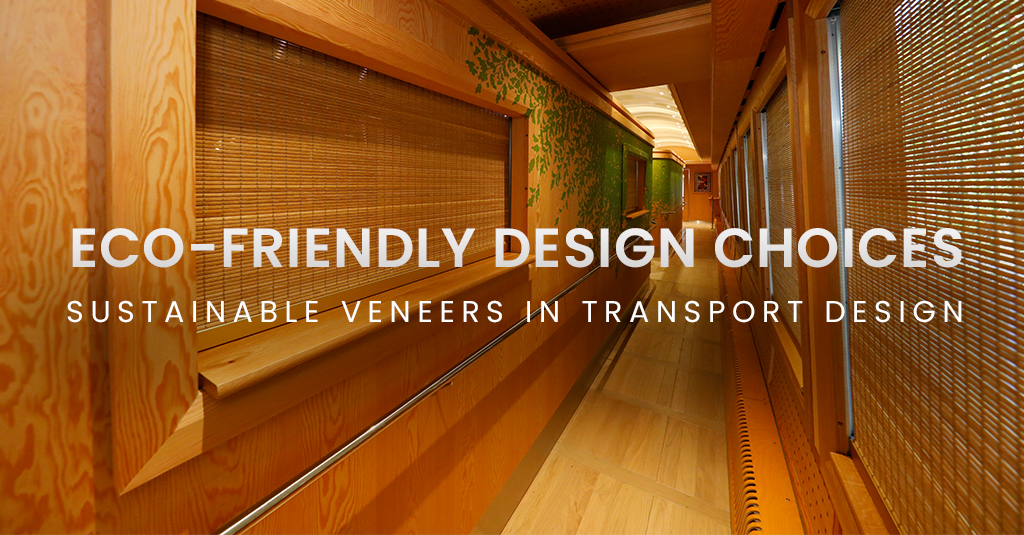
The market for sustainable materials has grown exponentially in recent years. More than four out of five consumers are willing to dig a little deeper to pay for sustainable products. More than half of businesses are also adopting sustainable products and practices, with a similar number actively choosing business partners that share their focus on eco-friendly values. Wood, in particular, has soared in popularity in recent years, as a sustainable building and design material and has become especially sought after in sustainable transport designs. At Jacaranda, we’re proud of how our eco-friendly materials have been at the forefront of transport design trends. Here’s everything you need to know.
The Beauty of Wood
The whorls, sleek lines, and burls of wood enrapture us. We can get lost in the naturally occurring grain patterns and mesmerized by the distinctive repeating stripes and designs. Humans have consistently chosen wood as not only a building material but also as a material for furnishing and decorating our homes for centuries. While we’ve found many cost-effective alternatives over the years, we always come back to wood, relishing its warm feel, its rich tones, and its lush patterns. Natural wood interiors have become popular in transportation, too, adding a touch of luxury to high-end cars, buses, trains, and aircraft to take your travels to the next level.
The Benefits of Wood in Transportation Interiors
Travel can be exciting, but it can also be stressful. The biophilic benefits of wood are well-recognized in the world of architecture. Those same benefits can bring a sense of calm to travelers whether on the road, on the railways, or in the sky. Wood makes us feel happy, healthy, and grounded. It’s often used in healthcare facilities to lower blood pressure, reduce stress, and promote patient recovery. According to one Austrian study, wood can improve student learning and reduce conflict, making it a good choice in schools. Those benefits can be brought to waiting areas in transportation facilities and calm drivers on busy motorways.
Even the feeling of wood against our skin has a warm and comforting effect, whether we’re walking on it, sitting on it, or merely touching it. It feels warmer to the touch and promotes a healthier indoor climate, absorbing carbon dioxide and regulating humidity more effectively, both essential benefits to travelers who may be in enclosed areas for long hours at a time.
Incorporating modern wood veneers in transit offers another benefit, too. The wood has a luxurious look and feel, but it is cost-effective. Wood veneer is wafer-thin and bonded to a durable yet flexible substrate that adheres to the underlying surface. We can wrap it around any curved or contoured surface and even radius corners without warping, cracking, or otherwise damaging the wood. The result is a sleek, beautiful dashboard or other wooden surface that creates a lush look and feel without compromising quality or budget and preserving environmental integrity.
Our Douglas Fir veneer and other woods meet the needs of the transportation industry while meeting your sustainability goals. Our wood veneer is cost-effective, durable, and built to last with a brilliant shine that can withstand heavy use and impacts. At Jacaranda, Inc., we offer virtually endless wood veneer options for autos, boats, aircraft, trains, and other transportation interiors, including Douglas Fir veneer. Our veneer can be installed on dashboards, seats, bulkheads, desks, walls, ceilings, bunk beds, and more. We use only AA Architectural Grade veneer and offer renewable wood finishes, and brilliant stains and dyes to meet your needs, using eco-friendly materials and sustainable techniques. Contact us today to learn more about incorporating SanFoot into the latest transport design trends or to schedule an appointment with a member of our design team.


